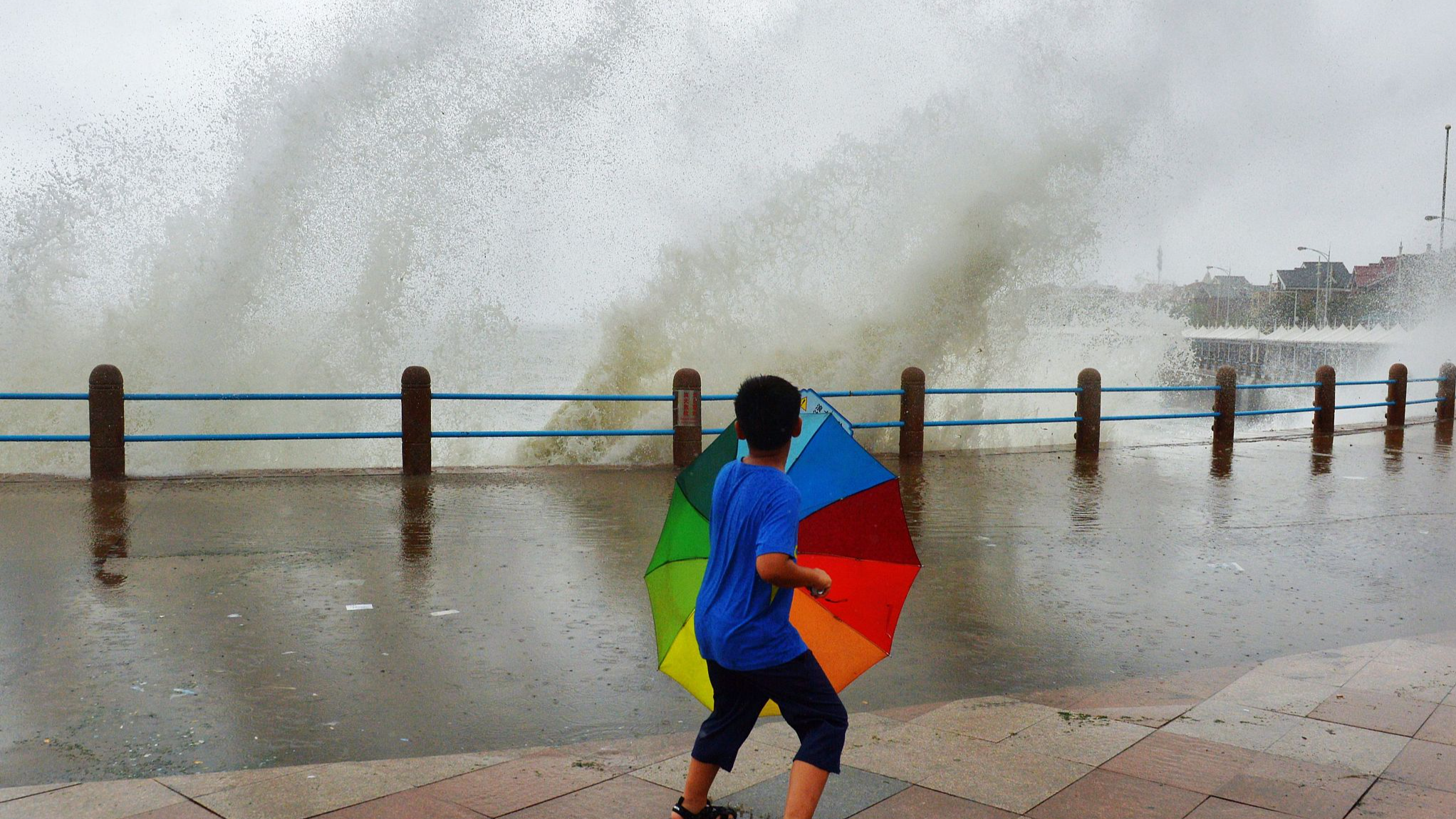
Typhoon roars through coastal Shandong Province, China, July 23, 2018. /CFP
Typhoon roars through coastal Shandong Province, China, July 23, 2018. /CFP
Typhoon Bavi, the eighth typhoon of this year, made landfall on the coast of North Pyongan Province in the Democratic People's Republic of Korea (DPRK), a region near the China-DPRK border, at around 8:30 a.m. on Thursday, according to the China Meteorological Administration. Forecasts previously showed that Bavi will also hit northeast China's Liaoning Province this morning, which prompted local Chinese authorities to gear up in high alert.
Bavi had packed maximum winds of 133 kilometers per hour when it made landfall early on Thursday in a western coastal region of the DPRK.
DPRK leader Kim Jong Un had previously called for thorough preparations to minimize casualties and damages, while the Republic of Korea (ROK) warned that strong winds will continue in Seoul and the country's central region through the morning.
The typhoon, which has already ripped off roofs and knocked out power to more than 1,600 households in the ROK, formed off the eastern coast of China's Taiwan region last week and has been gaining strength on its way north. The ROK's meteorological administration said the typhoon made landfall about 50 kilometers southwest of the DPRK capital Pyongyang, and will head to China.
China's response
China's Central Meteorological Observatory has declared red alerts for Bavi.
While Bavi's intensity is expected to weaken after its landfall, the strongest typhoon ever in the region is predicted to hit all the three provinces in northeastern China.
At present, it's a critical stage for the autumn harvest of crops, such as corn, soybeans and rice. The resulting crop lodging will have an adverse effect on the later production, and we must take precautions, said Guo Anhong, chief forecaster of the Central Meteorological Observatory.
Compared with southeast China's coastal areas, typhoons are rarely seen in the northeastern region and typhoons landing north are more likely to cause disasters. Zhang Juan, a meteorological analyst, said that this is because the northern region has insufficient experience in combating typhoons, and that once the northward typhoon encounters cold air, it will trigger rare heavy rainfalls. A similar typhoon that had once hit the northeastern region caused widespread damage to crops there.
As heavy rainstorms that follow Bavi are poised to devastate the region's agriculture and rivers, local and national agencies have actively responded, issued early warnings and made deployments to mitigate the damage.
China's flood control agency upgraded the emergency response of flood and typhoon prevention from level IV to level III on Thursday, and called for the affected areas to closely monitor the development of Bavi, and prepare for emergency rescue.
According to the Ministry of Emergency Management, the fire rescue teams of all three provinces in the northeast are ready to serve. More than 20,000 firefighters and a total of 329 rescue boats have been deployed at 47 stations.
Since the heavy rainfall is likely to affect most of the Songliao River Basin, the Songliao Committee of the Ministry of Water Resources on Tuesday launched a flood and drought disaster prevention level IV emergency response. In cities where the alerts are high, schools, offices, businesses and large outdoor gatherings have been suspended.
(With input from agencies)


